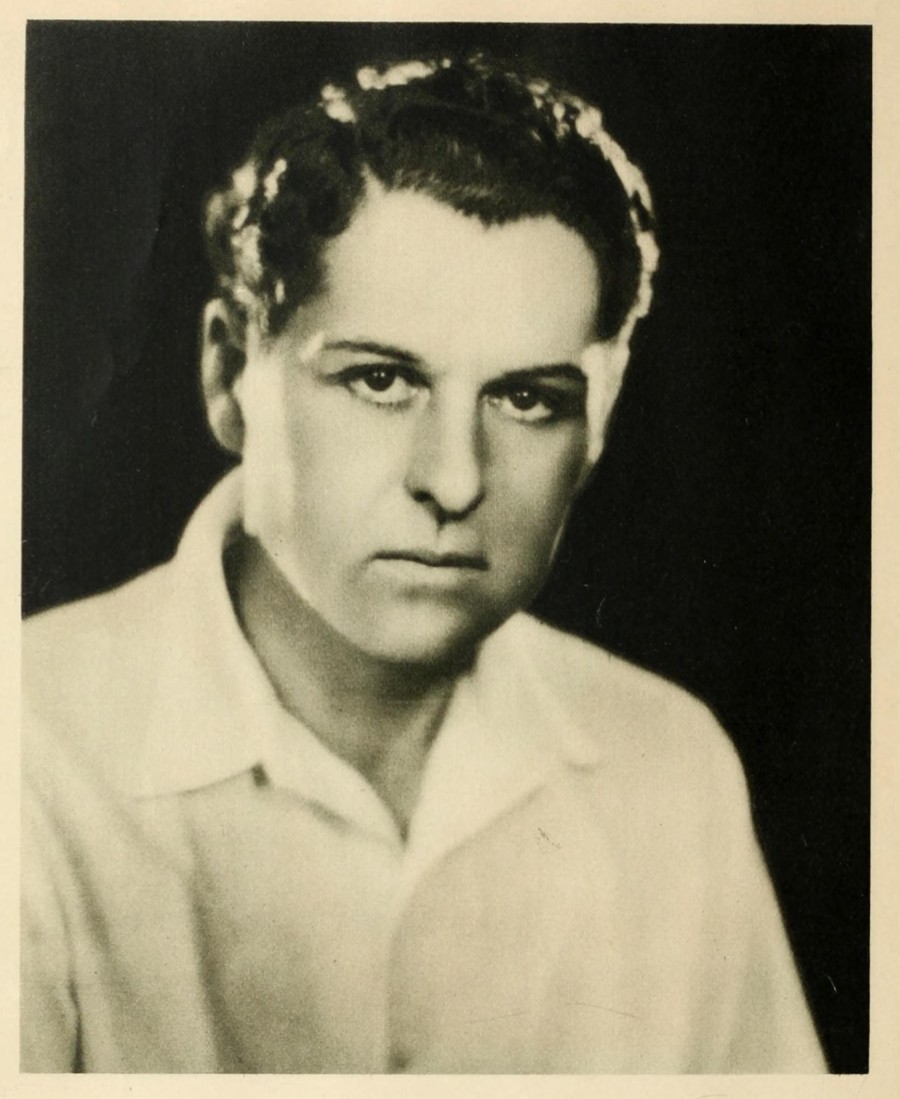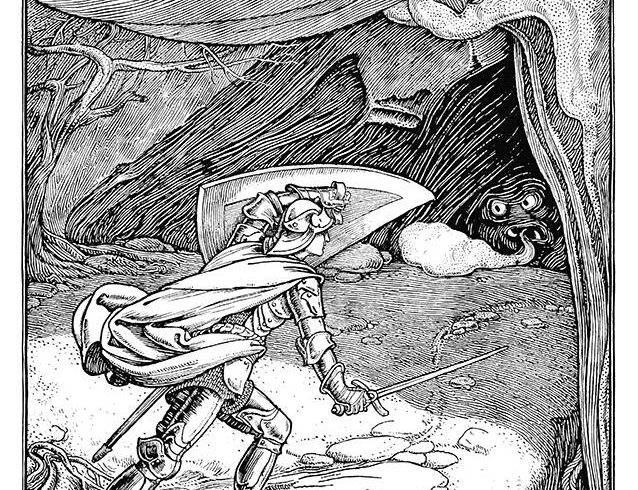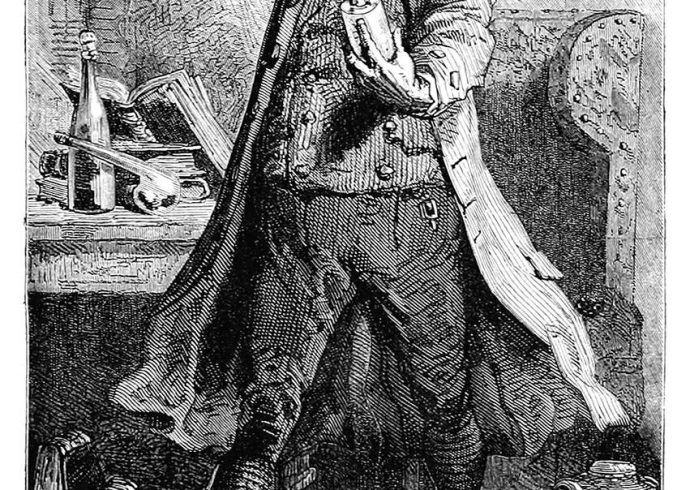
The early years of Hollywood were in many ways the most important, establishing groundbreaking technologies by motion picture camera inventors, a new form of entertainment – frequenting movie palaces – and film stars being favored among patrons. Yet Hollywood was at the same time an elite field, with the most talented on stage – and most attractive – being able to “make it” in film. While many ambitious Americans and Europeans dreamed of an acting career, those who were successful, often had to pay a high price for it – sometimes with their lives, either by accident, or suicide. Following are ten silent film actors/actresses who died in a tragic manner.

10. Lou Tellegen
The story of silent film actor Lou Tellegen is tragic on many levels. Born on November 26, 1883 in Sint-Oedenrode, Netherlands, Lou got his start in acting through live theatre in 1903 in Amsterdam. By 1910, Lou Tellegen made his film debut in “La Dame aux Camélias” in Paris. The film was based on a novel of the same title published in 1848 by the famous French writer Alexandre Dumas Jr., but also starred Sarah Bernhardt, one of the most famous actresses at the time. Sarah is credited for giving Lou the opportunity of a viable career path, after his Bohemian lifestyle led him to several arrests and time in prison, from selling birth-control pamphlets in Russia, to an unfortunate encounter with a young lady in Paris.
With his dark good looks and the desire to succeed, Lou’s acting career spanned from the mid 1910’s to the early 1930’s, starring in movies like “Camille” (1912), “The Explorer” (1915), “Parisian Nights” (1925), and “With This Ring” (1925). Having been married four times, his last wife was Eve Casanova, but the couple divorced in 1932. By the time Lou made his last movie, “Together We Live” (1935), his roles had been relegated to the supporting type, and his health was deteriorating. Lou also had a lot of debt he was unable to pay off due to his dwindling income, and on October 29, 1934 at the house of a friend in Hollywood, took a pair of sharp scissors, and stabbed himself to death in his chest seven times, according to The Tampa Tribune, October 30, 1934. His body was found on the bathroom floor, dead at the age of 51.

9. Lupe Vélez
María Guadalupe Villalobos Vélez was born in San Luis Potosí City, San Luis Potosí, Mexico on July 18, 1908. Going by the name Lupe, a diminutive of Guadalupe, she got her start in vaudeville in her home country back in the 1920’s. During the middle part of the 1920’s, she moved to the United States and made her first film appearance in “What Women Did for Me” (1927), a silent film short. Lupe’s first feature film appearance was “The Gaucho” (1927), where she was known as “The Mountain Girl” in character, and “The Gaucho” was none other than Douglas Fairbanks Sr. Due to her somewhat fiery personality both onscreen and offscreen, Lupe was nicknamed “The Mexican Spitfire” by the media. This in turn led to a number of movies with her in the leading female role bearing her nickname, such as “Mexican Spitfire Out West” (1940) and “Mexican Spitfire Sees a Ghost” (1942).
Lupe was married only once to Johnny Weissmuller from 1933 to 1939, but had numerous stormy affairs, among of which included Gary Cooper and the Austrian actor Harald Maresch, sometimes credited as Harald Ramond. Her affair with Maresch resulted in trouble for both of them; Lupe got pregnant by him, and once she publicly named him in her suicide note as the father of her child, his career as a star all but ended. Being an unwed mother still had a stigma, even for a popular Hollywood actress, not to mention Lupe being a devout Roman Catholic. Swallowing a bottle of Seconal, a popular barbiturate, Lupe died on December 13, 1944 at her home in Beverly Hills, California, pregnant by Maresch. Her unborn child died along with her.

8. Max Linder
Born Gabriel-Maximillien Leuvielle on December 16, 1883 in Saint-Loubès, Gironde, France, Max Linder was considered to be the first international movie star of the silent film era. Max was a producer, director, screenwriter, actor and comedian. It was his love for the theatre which led him to become an actor. Receiving his education in the field at Conservatoire de Bordeaux, Max soon won prizes for his outstanding performances in comedy and tragedy. The first film short Max starred in was “La première sortie d’un collég shien”, or “First Night Out” (1905), which showcased his comedic talents. The first film short Max directed as well as starred in was “L’obsession de l’équilibre”, or “Amateur Acrobat” (1908). Max often wore a black silk top hat, and along with his mustache, looked like a dandy.
By the time Max’s films were shown in other parts of Europe and the United States, he had skyrocketed to fame and was often compared to Charlie Chaplin and Buster Keaton. By 1911 Linder started directing films, but before he knew it, he was drafted into the French Army to fight in World War 1. It was during the war when he was on the front line, directly exposed to a substantial dose of mustard gas, which permanently altered his life and career once he returned home in France. This wartime incident resulted in Max being terminally ill, despite the fact he was still capable of performing and directing. He was even offered a contract to work in the United States, but by then it was too late. His American-made films such as “A Ringer for Max” (1915) and “Max in a Taxi” (1917) were entertaining enough for audiences but did not have the same substance as his pre-war French silent comedies did. Max died on November 1, 1925 in Paris, France, due to an overdose on Veronal, a barbiturate. Even more tragically, his wife Hélène Peters who he married only two years earlier, died in the same manner, in a suicide pact, on October 31, 1925.

7. Peg Entwistle
The name Peg Entwistle is in many ways synonymous with early Hollywood suicides. Born on February 5, 1908 in Port Talbot, Wales, United Kingdom, Lillian Millicent Entwistle’s parents divorced when she was young, and being in the custody of her father Robert who was a stage actor, arrived in the United States by 1913. Peg’s acting career began in 1925 where her first role was as a cup bearer in “Hamlet” on Broadway which starred Ethel Barrymore. Peg’s role was minor and uncredited, but being a member of the Henry Jewett Players, gave her an opportunity to get more acting jobs in a prestigious location. Peg soon appeared in “The Man from Toronto” (1926) and “Tommy” (1927) on Broadway, only this time as a credited actress. In 1932, Peg transitioned from New York to Los Angeles, appearing onstage at the Belasco Theatre in “The Mad Hopes”. Her performance was critically acclaimed by the press and attracted the attention of David O. Selznick who decided to cast her in the RKO movie “Thirteen Women” (1932), which Myrna Loy, Irene Dunne, and Ricardo Cortez.
Unfortunately for everyone involved in the making of this movie, it was both a financial and critical flop. Taking it personally, Peg quickly became disillusioned over the prospect of having a film career, and at the age of 24 September 18, 1932, leaped from the letter “H” in the ubiquitous Hollywood sign (then called Hollywoodland) located in the Santa Monica Mountains to her death. Ironically enough, her suicide occurred two days after “Thirteen Women” was released, suggesting her decision to end her life was based on premature results of the movie’s success as well as not having the resiliency needed for success in the film making business.

6. Louis Bennison
Louis Bennison had a brief acting career on stage and in silent film, primarily westerns, which ended up in an extraordinary tragedy, not only costing him suicide but the taking of another life – a woman he loved. Louis was born on October 17, 1884 in Oakland, California. He appeared in only ten silent films between 1914 and 1921, was married to a woman named Frances and had two children with her when his life started to go downhill. During his film career Louis had issues with alcoholism, which became exacerbated when he threatened to commit suicide on more than one occasion. He also left his wife and children in Los Angeles and headed to New York where he worked with Margaret Lawrence, a stage actress, falling in love with her. The two appeared onstage together in “The Heaven Tappers” in 1927. In 1929 during the first half of the year, Margaret was in the process of filing a divorce from Wallace Eddinger, but he died of pneumonia before he could go to court over the proceedings. With Wallace deceased, Louis moved into Margaret’s penthouse in New York City in April of 1929. Experiencing a deep state of depression and inebriation on the night of June 9, 1929, Margaret asleep in bed and Louis sitting nearby, he pulled out a gun and shot her through the left side of her chest, then turned the gun on himself, in the same spot. According to The Chicago Tribune, June 10, 1929, a cryptic message was scrawled on an envelope and found tacked to the door between the living room and kitchen by the authorities. The message said the following:
“The sunset has a heart. Look for us there.”
A second note, written on stationery most likely by Louis, said:
“Please notify Mr. Mussen at the Lambs Club at once.”
Bennett Mussen was an actor and writer, who had collaborated with Louis on writing a play at one point. Mussen was familiar with Louis having periodic bouts with depressions to the point where the latter came close to committing suicide using a gun while inebriated during a Lambs Club meeting. The Lambs Club was a club for professional theatre actors and actresses that began in 1905, but today the building is now a restaurant and bar. A tragic end to two promising careers, Louis and Margaret’s deaths remain one of the earliest murder-suicides of early Hollywood.

5. Olive Thomas
Olive Thomas was a bit of an enigma in Hollywood: the Helen of Troy during her time, talented beyond belief, married twice, once to Jack Pickford, the younger brother of actress Mary Pickford, only for her life to end at the age of 25. Her perfect physique was immortalized by artists like Alberto Vargas, Harrison Fisher, Raphael Kirchner, and Penrhyn Stanlaws. Born on October 20, 1894 in Charleroi, Pennsylvania as Oliva Duffy, she entered a won a beauty contest held in New York City during the year 1914 and won. That event marked the start of her career as a model, and when Fisher recommended Olive to Florenz Ziegfeld, Jr., the latter decided to include her as one of his Ziegfeld Follies girls.
Olive’s many achievements from that point on included being the first “Vargas Girl”, studio contracts with International Film Company, Paramount Pictures, and Triangle Pictures from 1916 to 1917, and an adoring public who could not wait to see her newest silent film. By 1918 she was making $2,500.00 a week with Selznick Pictures Company. In all, she appeared in 24 silent films, which includes “Beatrice Fairfax” (1916), “Madcap Madge” (1917), “Betty Takes a Hand” (1918), “The Follies Girl” (1919), and “The Flapper” (1920). Olive was married to Jack Pickford in 1916 although she already had one previous marriage – and divorce in 1913 – to Bernard Krug Thomas.
When 1920 came around, Olive’s marriage to Jack was on the rocks, and she was not happy with his infidelities and drinking. In August of that year, the couple traveled to Paris for a vacation, and prior to falling asleep on the night of September 10 after attending a party with Jack, she picked up a small bottle on the nightstand, perhaps thinking it was a sleeping aid, consumed a portion, then called for help. What was in the bottle? Mercury bichloride, which at the time was used to treat syphilis – and Jack had syphilis, even giving the disease to his wife. Was this an accident on Olive’s part? Or did she really commit suicide, as the press claimed at the time? Jack became more despondent than ever before, even attempting to throw himself over the ship as it traveled across the Atlantic Ocean back home to America for Olive’s burial at Woodlawn Cemetery in New York. He died in 1933.

4. John Bowers
John Bowers was born on December 25, 1885 in Garrett, Indiana and started his career in silent film at the age of 28, his first appearance being in “The Baited Trap” (1914), a drama/thriller short for Independent Moving Pictures Company of America. He eventually signed contracts with Famous Players Film Company, World Film, Goldwyn Pictures Corporation, and Film Booking Offices of America which provided a steady stream of work, either in supporting roles or leading man roles, such as “Divorce” (1923). More leading man roles include in “Rocking Moon” (1926) opposite Lilyan Tashman, and “When a Man’s a Man” (1924) with Marguerite de la Motte, who he eventually married. Marguerite was a popular actress who originally trained as a ballerina, her career beginning in 1918 and lasted until 1942. Marguerite was not his first wife, however; John had two previous marriages and divorces behind him, one to actress Beulah Poynter, the second, to Rita Heller.
John made 95 films during his acting career, only three of them being sound films. The first one was “Say it with Songs” (1929), a musical which starred Al Jolson and Marian Nixon. His last film made, “Mounted Fury” (1931) ended his career, being unable to get work as an actor for the next five years. It was in 1936 when John Bowers decided to end it all, having gone from being a tall, handsome sometime leading man to a despondent man who believed there was nothing else to live for. Even though he had experience as a yachter, John went out in the Pacific Ocean in a 16’ sailboat and drowned himself, after attending a party. He was 50 years old. His body was found in the surf off Malibu Beach three days later, according to the Los Angeles Times (November 18, 1936). Authorities discovered his vacant sailboat floundering a mile from Santa Monica. Ironically, John Bowers spent the last years of his life in aviation, although not as a professional aviator, which could have certainly enabled him to have a second career.

3. Florence Lawrence
Frequently referred to as being the “first movie star”, Florence Lawrence was born on January 2, 1886 in Hamilton, Ontario, Canada. The first silent film she made was for Vitagraph Company, a film short titled “The Automobile Thieves” (1906). Fifteen silent films later, Florence signed a contract with American Mutoscope & Biograph, appearing in “Betrayed by a Handprint” (1908). Her popularity took off as a “Biograph Girl”, which led her to play the title character in “Salome” (1908). However, she wanted to seek more opportunities as an actress, and with her husband, director Harry Solter, joined Independent Moving Pictures Co. of America (IMP) which was started by Carl Laemmle in 1909. Blacklisted by the Motion Picture Trust, an organization made up of Hollywood producers and headed by Thomas Edison, the trust did not permit non-members to use their patented motion picture equipment for film making. In 1914, an accident on the stage injured her back, which meant putting her career on hold while she recovered. It was not until 1916 when Florence attempted a comeback in silent film, but her silent film “Elusive Isabel” for Universal wound up being unsuccessful. Her only starring role during the 1920’s was in “The Unfoldment” (1922), despite the fact her film appearances during this decade were sporadic most likely due to her ongoing back issues, appearing in only six silent films in all.
Florence Lawrence made almost 300 films, her last one being “Night Must Fall” in 1937, her last role being a minor one, as were all of her roles in the 1930’s. Growing despondent, she died on December 28, 1938 at the age of 52 from a lethal combination of ant poison and cough syrup.

2. Allyn King
Born on February 1, 1899 in Wilmington, North Carolina, Allyn King had it all: looks, talent, and sweet personality. Unfortunately, her life was plagued with tragedy from the start: at the age of 10, her father was murdered by a 16 year-old boy when he moved the family to New Orleans, Louisiana. To get a new start on life, her mother decided to move to New Haven, Connecticut. Being so close to New York City, the entertainment field offered Allyn a chance to showcase her talents. Breaking through in vaudeville, by late 1916 she became the headliner of the Ziegfeld Follies. Her earnings – $500.00 per week for five successive seasons – enabled Allyn and her mother to live comfortably. In 1920, she snagged a part in the Broadway production “Ladies Night”. Other stage performances she appeared in were “Sun Showers” (1923), “Moonlight” (1924), “Florida Girl” (1925), and “90 Horse Power” (1926). While the stress of performing live on stage was not enough for Allyn, she also developed an eating disorder. A clause in her stage contract mandated that she weigh no more than 115 pounds, and in order to prevent weight gain, she used thyroid tablets, in addition to cutting down caloric intake.
Allyn made one silent film, for Inspiration Company, “The Fighting Blade” (1923) which starred Richard Barthelmess and Dorothy Mackaill. The role was a supporting one, and not immediately pursuing other film contracts, decided to resume working on Broadway. By 1927, Allyn was hospitalized for two years, in an attempt to maintain a healthy weight. She was briefly engaged to Carl Wiedemann but broke it off in 1923, as she did not want to marry. On March 29, 1930, Allyn jumped from the fifth floor while staying at her aunt’s apartment in New York City, the culmination of anorexia nervosa and a nervous breakdown which required hospitalization. She died two days after. Allyn claimed, “I did it because I’ll never get back to Broadway.” What is probably the most tragic about her death is that she was not some petite 5’ tall Follies star. Allyn was 5’7” tall, and at her “heaviest”, weighed 145 pounds – an average size for a woman, even for an actress.

1. Lillian Hall-Davis
Lillian Hall-Davis was born on June 23, 1898 in London, England, but unlike most budding actors of the late 19th century, did not start her career on the theatrical stage. Instead, she began appearing in silent films in 1917 at the age of 19, her debut being in a French film, “La p’tite du sixième” (1917), which starred Sandra Milovanoff. Even without the benefit of a theatrical background, Lillian managed to quickly gain success as a leading lady in silent film during the 1920’s, soon drawing the attention of Alfred Hitchcock during his early directorial years. He signed her on for the lead female role in “The Ring” (1927), then “The Farmer’s Wife” (1928). In her personal life, Lillian married stage actor Walter Pemberton in 1918, and had a son by him.
In all, Lillian appeared in 44 films, only three of them being sound. Like so many actors of the silent film period, she was unable to transition to sound film, and her career ended in 1931. Distraught and ill with neurasthenia plus a nervous breakdown, she committed suicide by sticking her head in the gas over in her kitchen at her London apartment while it was on, then slit her throat with a straight razor belonging to her brother on October 25, 1933. She was 34 years old at the time of her death.


